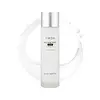What's inside
What's inside
 Key Ingredients
Key Ingredients

 Benefits
Benefits

 Concerns
Concerns

No concerns
 Ingredients Side-by-side
Ingredients Side-by-side

Water
Skin ConditioningPentylene Glycol
Skin ConditioningGlycerin
HumectantPropanediol
SolventC13-15 Alkane
SolventPanthenol
Skin ConditioningPolyglyceryl-6 Oleate
EmulsifyingCeteth-20 Phosphate
CleansingSodium PCA
HumectantOphiopogon Japonicus Root Extract
Skin ConditioningAmmonium Polyacryloyldimethyl Taurate
Emulsion StabilisingCetearyl Alcohol
EmollientAllantoin
Skin ConditioningSodium Hyaluronate
HumectantDicetyl Phosphate
EmulsifyingMaltodextrin
AbsorbentAlthaea Officinalis Root Extract
Skin ConditioningEthylhexylglycerin
Skin ConditioningSodium Phytate
Pantolactone
HumectantTocopherol
AntioxidantPhenoxyethanol
PreservativeWater, Pentylene Glycol, Glycerin, Propanediol, C13-15 Alkane, Panthenol, Polyglyceryl-6 Oleate, Ceteth-20 Phosphate, Sodium PCA, Ophiopogon Japonicus Root Extract, Ammonium Polyacryloyldimethyl Taurate, Cetearyl Alcohol, Allantoin, Sodium Hyaluronate, Dicetyl Phosphate, Maltodextrin, Althaea Officinalis Root Extract, Ethylhexylglycerin, Sodium Phytate, Pantolactone, Tocopherol, Phenoxyethanol
Water
Skin ConditioningGlycerin
HumectantButylene Glycol
HumectantNiacinamide
SmoothingAnthemis Nobilis Flower Extract
Masking1,2-Hexanediol
Skin ConditioningCaprylyl Glycol
EmollientOryza Sativa Bran Extract
Skin ConditioningStyrene/Vp Copolymer
Panthenol
Skin ConditioningAllantoin
Skin ConditioningBetaine
HumectantSodium PCA
HumectantAdenosine
Skin ConditioningDisodium EDTA
Illicium Verum Fruit Extract
PerfumingGlycyrrhiza Glabra Root Extract
BleachingArginine
MaskingCarbomer
Emulsion StabilisingCentella Asiatica Extract
CleansingAlchemilla Vulgaris Extract
AstringentAmaranthus Caudatus Extract
Skin ConditioningOlea Europaea Leaf Extract
PerfumingVeronica Officinalis Extract
Skin ConditioningMentha Piperita Leaf Extract
Skin ConditioningUlmus Davidiana Root Extract
Skin ConditioningCynara Scolymus Leaf Extract
Skin ConditioningAvena Sativa Kernel Extract
AbrasiveSambucus Nigra Flower Extract
RefreshingCamellia Sinensis Leaf Extract
AntimicrobialPolygonum Cuspidatum Root Extract
AntioxidantChamomilla Recutita Flower Extract
MaskingRosmarinus Officinalis Leaf Extract
AntimicrobialSodium Hyaluronate
HumectantScutellaria Baicalensis Root Extract
AstringentBeta-Glucan
Skin ConditioningLaminaria Japonica Extract
Skin ProtectingChamaecyparis Obtusa Leaf Extract
Skin ConditioningCeramide NP
Skin ConditioningCopper Tripeptide-1
Skin ConditioningAcetyl Hexapeptide-8
HumectantWater, Glycerin, Butylene Glycol, Niacinamide, Anthemis Nobilis Flower Extract, 1,2-Hexanediol, Caprylyl Glycol, Oryza Sativa Bran Extract, Styrene/Vp Copolymer, Panthenol, Allantoin, Betaine, Sodium PCA, Adenosine, Disodium EDTA, Illicium Verum Fruit Extract, Glycyrrhiza Glabra Root Extract, Arginine, Carbomer, Centella Asiatica Extract, Alchemilla Vulgaris Extract, Amaranthus Caudatus Extract, Olea Europaea Leaf Extract, Veronica Officinalis Extract, Mentha Piperita Leaf Extract, Ulmus Davidiana Root Extract, Cynara Scolymus Leaf Extract, Avena Sativa Kernel Extract, Sambucus Nigra Flower Extract, Camellia Sinensis Leaf Extract, Polygonum Cuspidatum Root Extract, Chamomilla Recutita Flower Extract, Rosmarinus Officinalis Leaf Extract, Sodium Hyaluronate, Scutellaria Baicalensis Root Extract, Beta-Glucan, Laminaria Japonica Extract, Chamaecyparis Obtusa Leaf Extract, Ceramide NP, Copper Tripeptide-1, Acetyl Hexapeptide-8
 Reviews
Reviews

Ingredients Explained
These ingredients are found in both products.
Ingredients higher up in an ingredient list are typically present in a larger amount.
Allantoin is a soothing ingredient known for its protective and moisturizingg properties. Because of this, it is often added to products with strong active ingredients.
Studies show higher concentrations of this ingredient can promote wound healing.
Though it can be derived from the comfrey plant, allantoin is produced synthetically for cosmetic products to ensure purity.
Learn more about AllantoinGlycerin is already naturally found in your skin. It helps moisturize and protect your skin.
A study from 2016 found glycerin to be more effective as a humectant than AHAs and hyaluronic acid.
As a humectant, it helps the skin stay hydrated by pulling moisture to your skin. The low molecular weight of glycerin allows it to pull moisture into the deeper layers of your skin.
Hydrated skin improves your skin barrier; Your skin barrier helps protect against irritants and bacteria.
Glycerin has also been found to have antimicrobial and antiviral properties. Due to these properties, glycerin is often used in wound and burn treatments.
In cosmetics, glycerin is usually derived from plants such as soybean or palm. However, it can also be sourced from animals, such as tallow or animal fat.
This ingredient is organic, colorless, odorless, and non-toxic.
Glycerin is the name for this ingredient in American English. British English uses Glycerol/Glycerine.
Learn more about GlycerinPanthenol is a common ingredient that helps hydrate and soothe the skin. It is found naturally in our skin and hair.
There are two forms of panthenol: D and L.
D-panthenol is also known as dexpanthenol. Most cosmetics use dexpanthenol or a mixture of D and L-panthenol.
Panthenol is famous due to its ability to go deeper into the skin's layers. Using this ingredient has numerous pros (and no cons):
Like hyaluronic acid, panthenol is a humectant. Humectants are able to bind and hold large amounts of water to keep skin hydrated.
This ingredient works well for wound healing. It works by increasing tissue in the wound and helps close open wounds.
Once oxidized, panthenol converts to pantothenic acid. Panthothenic acid is found in all living cells.
This ingredient is also referred to as pro-vitamin B5.
Learn more about PanthenolSodium Hyaluronate is hyaluronic acid's salt form. It is commonly derived from the sodium salt of hyaluronic acid.
Like hyaluronic acid, it is great at holding water and acts as a humectant. This makes it a great skin hydrating ingredient.
Sodium Hyaluronate is naturally occurring in our bodies and is mostly found in eye fluid and joints.
These are some other common types of Hyaluronic Acid:
Learn more about Sodium HyaluronateSodium PCA is the sodium salt of pyroglutamic acid. It is naturally occurring in our skin's natural moisturizing factors where it works to maintain hydration.
The PCA stands for pyrrolidone carboxylic acid, a natural amino acid derivative.
This ingredient has skin conditioning, anti-inflammatory, and humectant properties. Humectants help hydrate your skin by drawing moisture from the air. This helps keep your skin moisturized.
Learn more about Sodium PCAWater. It's the most common cosmetic ingredient of all. You'll usually see it at the top of ingredient lists, meaning that it makes up the largest part of the product.
So why is it so popular? Water most often acts as a solvent - this means that it helps dissolve other ingredients into the formulation.
You'll also recognize water as that liquid we all need to stay alive. If you see this, drink a glass of water. Stay hydrated!
Learn more about Water